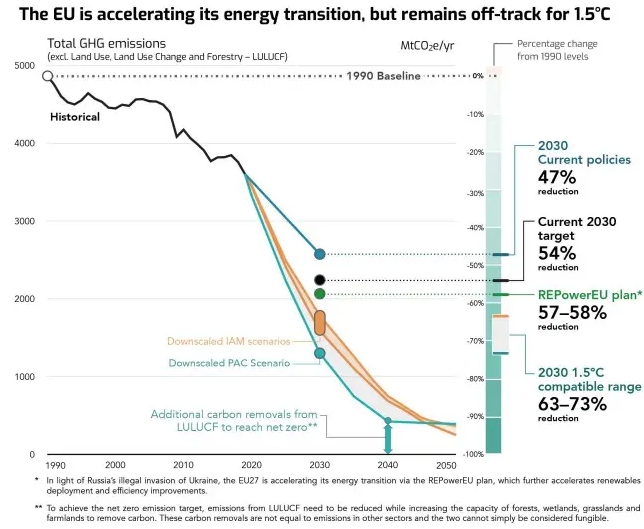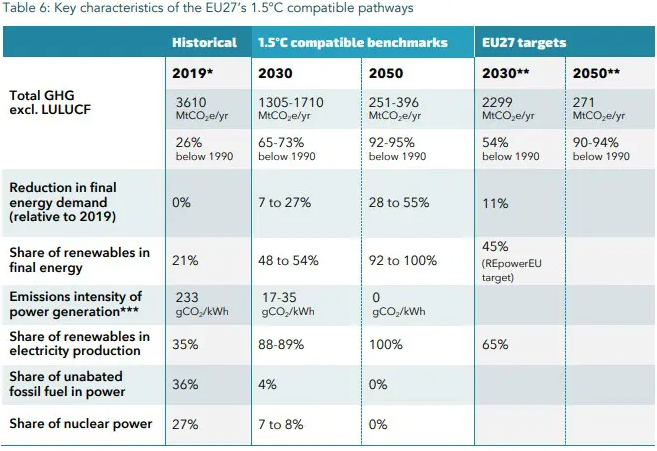Cutting emissions in 2030: Europe is on the wrong track to reduce temperature by 1.5 ºC
Climate Analytics calculations to put the EU on the trajectory of Target 1.5°C
(Sustainabilityenvironment.com) – In order to be in line with Objective 1.5°C of the EU, the EU needs to raise its emission reduction target very much and bring forward the date of climate neutrality. Instead of 2050, the net-zero horizon must be brought forward by 5-10 years, to 2040-2045. While the cut of the greenhouse gases, today fixed to -55% within 2030 regarding the levels of 1990, must rise to -66-77%. It also has to limit its emissions to no more than 11-20 GtCO2e by 2050. Any less ambitious policy means one thing: Brussels will not play its part in the climate crisis.
This is supported by the report 1.5°C Pathways for the EU27: accelerating climate action to deliver the Paris Agreement where the NGO Climate Analytics analyzes the climate performance of the Twenty-seven, the new objectives are foreseen by the EU Repower plan and compares them with the trajectory compatible with the 1.5 C. Identifying 2 possible and “technically feasible” scenarios.
The current trajectory for cutting emissions
According to the national voluntary contributions (NDC) deposited at the UNFCC, the EU-27 promises to reach -55% of greenhouse gas for cutting emissions by 2030, which becomes -54% when excluding greenhouse gases related to land use, land use change and forestry (Lulucf).
Although it complements the account with the measures provided for by the Repower Eu plan, with which Brussels increased the targets on renewable (from 40 to 45%), energy efficiency (from 9 to 13%), and gave a boost to the installation of new renewable capacity, The European emission curve is still very far from the 1.5 MtCO2e target C. In this case, in fact, according to Climate Analytics calculations, the gap would increase from 500-1000 MtCO2e in 2030 to 280-770 MtCO2e (equivalent to a target of -57-58%).
Read also IPCC report: Moving to sustainable lifestyles cuts global emissions by 40-70%
Overall, the new EU-27 cutting emission target should therefore rise to at least -63-73% by the end of the decade compared to 1990 levels.

Scenarios for Objective 1.5 C
How is the energy transition curve made in the two scenarios developed by Climate Analytics, and what are their characteristics? In both, electricity accounts for 66-70% of final energy in 2050 (34-42% in 2030, twice as high as today). Energy demand is falling substantially, down to 58% less than in 2019. Renewables provide 48-54% of final energy demand by the end of the decade and then rise to 92-100% by mid-century.
As for fossil fuels, the phase-out for everyone is quite sudden. Coal is about the beginning of the 1930s, oil is about 2040, and fossil gas about the middle of the next decade. Of course, the decarbonization of the energy sector is mainly about the expansion of wind and solar.
Hydrogen provides 5-11% of the final energy demand by 2050 in these pathways. Neither scenario uses hydrogen in the building sector, which is decarbonized due to the spread of heat pumps and increased use of district heating.







